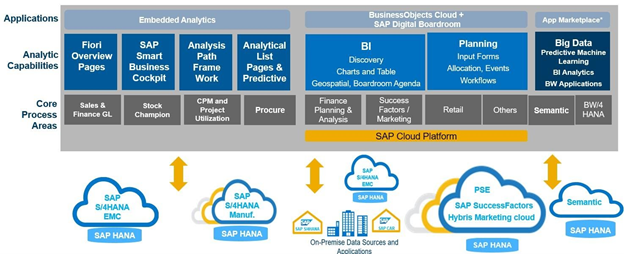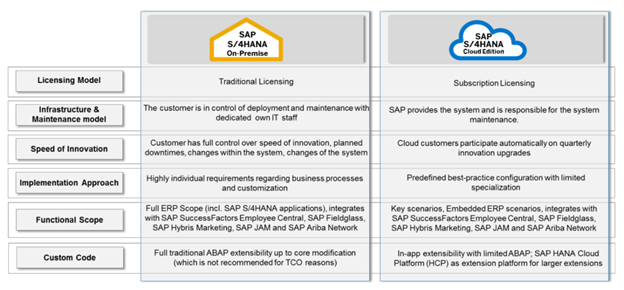 Anthony Cecchini is the President and CTO of Information Technology Partners (ITP), an ERP technology consulting company headquartered now in Virginia, with offices in Herndon. ITP offers comprehensive planning, resource allocation, implementation, upgrade, and training assistance to companies. Anthony has over 20 years of experience in SAP business process analysis and SAP systems integration. ITP is an Appian, Pegasystems, and UIPath Low-code and RPA Value Added Service Partner. You can reach him at [email protected].
Anthony Cecchini is the President and CTO of Information Technology Partners (ITP), an ERP technology consulting company headquartered now in Virginia, with offices in Herndon. ITP offers comprehensive planning, resource allocation, implementation, upgrade, and training assistance to companies. Anthony has over 20 years of experience in SAP business process analysis and SAP systems integration. ITP is an Appian, Pegasystems, and UIPath Low-code and RPA Value Added Service Partner. You can reach him at [email protected].
As we spoke about last month, cloud computing is one of the hottest buzzwords in technology. It appears 48 million times on the Internet. We concluded that SAP’s offerings can be quite confusing… There is HANA Enterprise Cloud (HEC), and SAP Cloud Platform (previously HANA Cloud Platform), and HANA Cloud. So lets Recap before we dive yet another offering called S/4HAN Cloud…
SAP HEC is a managed IaaS {infrastructure-as-a-service} offering, where customers can run their own scoped S/4 HANA on premise version, customized to their own needs. They also can add satellite/legacy systems, if they are part of their SAP landscapes or can bring in an older SAP version into HEC (e.g. R/3, mySAP ERP) with the intention of a soon planned release change towards S/4 HANA…
SAP HANA Cloud Platform( or SAP Cloud Platform) is a Paas ( Platform as a service) . It is for Developers. It provides a platform( IDEs and tools) to develop new apps/ extend existing apps.
SAP HANA Cloud is a SaaS {software-as-a-service} offering from SAP. Even so, it is offered as more of a database-as-a-service (DBaaS). SAP designed the HANA Cloud for clients who want easier access to the high speed associated with the in-memory database of SAP HANA, use a relational data lake that handles a large data amount and enjoy the benefits of cloud. Its just the HANA appliance in the cloud so to speak.
OK, so what is S/4HANA Cloud….
S/4 HANA Cloud is a pre-scoped version of S/4 HANA with a reduced set of functionality compared to S/4 HANA on premise, provided as pure SaaS {software-as-a-service}. Customers can instantly use the functionality. Specifically there are certain industry sets, e.g. procurement, sales, manufacturing, professional services, sourcing, and finance.

S/4HANA Cloud is a collection of integrated applications designed to ease the planning of company resources based on its needs. S/4HANA Cloud makes these applications available for users on the cloud. The solution uses the real-time data accessibility and in-memory processing of HANA to provide solutions on a SaaS model.
HANA is a high-performance analysis application that was used with different hardware to analyze large data amounts. S/4HANA Cloud uses the HANA in-memory database to access data in real-time to speed business processes.
As a cloud-based solution, you do not depend on resources like IT expertise, storage, internal hardware, and databases from SAP when using S/4HANA Cloud. You can virtually link your functional areas and departments while digitizing business processes. This means your company can adapt quickly to new technologies with S/4HANA Cloud.
So what are the components of S/4 HANA Cloud…
SAP S/4HANA Cloud is based on three main technologies. These technologies enable the achievement of seamless digital transition and improvement of processes in all areas of a company. The following are the three technological pillars of S/4HANA Cloud.
SAP Digital Assistant
The S/4HANA Cloud has a conversational virtual assistant known as SAP CoPilot. This uses artificial intelligence to adapt software users to their roles and give relevant information that eases the execution of a task. SAP CoPilot uses contextualized information about the task and its user to do this.
SAP Machine Learning and Intelligent Robotics Process Automation (iRPA)
The integrative machine learning technology in S/HANA Cloud allows a user to automate his/her tasks. This will prove particularly beneficial when handling recurring tasks that are prone to errors when executed manually. The automation that SAP Machine Learning allows in S/4HANA Cloud also saves time.
SAP Predictive Analytics
With this technology in S/4HANA Cloud, you can make informed decisions quickly. SAP Predictive Analytics is an analytical tool that predicts the results of different actions depending on the available data. For individual applications, this technology can be adapted to suit application areas and a user’s needs.
With the S/4HANA Cloud, you get a subscription license model. In this, you pay an annual fee covering all your software components. The license you get lasts for 1-3 years with its associated charges based on the documents processed, bandwidth used, and the number of users. You can pay your user fees monthly according to your user framework.
The cloud provider will handle all the aspects of your S/4HANA solution. Though this means low maintenance costs and upgrades your systems to the latest version quarterly, you have little control over the solution because a third party fully manages it.
Being already familiar with SAP, this question is always top of mind….
We are all used to customizing on-premise SAP and S/4HANA on-premise is no different and gives you control and flexibility for customization. If you have a new requirement and need to customize your software, you can do this right away.
S/4HANA cloud is pre-scoped and has a predefined configuration according to the best practices for your company’s processes. This means you have less flexibility and control, along with minimal customization abilities.
The implementation of S/4HANA Cloud is quick because it uses a ready-made platform. Its testing and planning are also already done by the cloud provider. To give you a better feel of this offering, lets compare it to it’s on-premise cousin…

We have two options when migrating to SAP S/4HANA. The greenfield and the brownfield approach. In the greenfield strategy, the SAP system is implemented from scratch. Although all data is transferred in a cleansed form, processes must be re-built and adjusted. When switching to the S/4HANA Cloud, you cannot avoid this effort because the entire system landscape has to be reworked. In the brownfield strategy, which is often used in the on-premise solution, a system conversion takes place. This means that current processes are adopted and optimized.
Migration to the SAP S/4HANA cloud is a multi-step process and requires good planning. In addition to the SAP S/4HANA Migration Cockpit tool, there are useful enterprise architecture (EA) tools that simplify the transition to digitized management and provide a transformation roadmap.
Summary
Even though the migration to the S/4HANA Cloud is challenging, the SAP Cloud Platform offers companies the opportunity to implement a unified and efficient ERP system that saves costs and effort in the long run. Below are the benefits to using the S/4HANA Cloud.
Flexible subscription: The flexibility of the subscription cost model for S/4HANA Cloud allows all companies to afford the solution irrespective of their budgets.
Quick implementation: There is no custom programming needed when using the pre-built platform of S/4HANA Cloud. This makes the solution’s implementation quick. Furthermore, you need no prior software skills because S/4HANA Cloud’s user interface is user-friendly.
Increased efficiency: SAP best practices allow users to adopt proven standardized procedures and processes. This accelerates analysis and simplifies business processes to boost your company’s efficiency. There are also industry-specific functionalities that come as individual roadmaps on S/4HANA Cloud.
Optimal support and maintenance: With S/4HANA Cloud, you do not have to worry about your software’s maintenance and server’s capacity. The solution’s integrated configuration and analysis tools also ease the development of new products or services.
Rapid innovation and constant updates: Adaptability and flexibility are crucial with the rapid growth of companies now. S/4HANA Cloud has a quarterly innovation cycle. This means you will benefit from innovations like predictive analytics and machine learning within a short time of their introduction in the market.
Low TCO (total cost of ownership): You will not factor in the costs of hardware, IT staff, and databases, among other elements needed in on-premise S/4HANA. This lowers the TCO of the S/4HANA Cloud.
.




